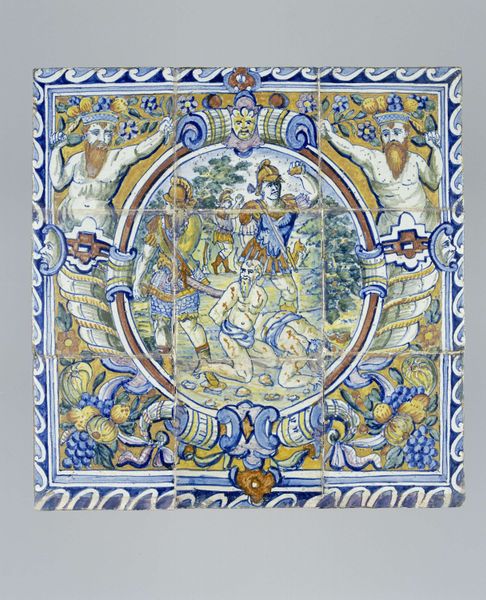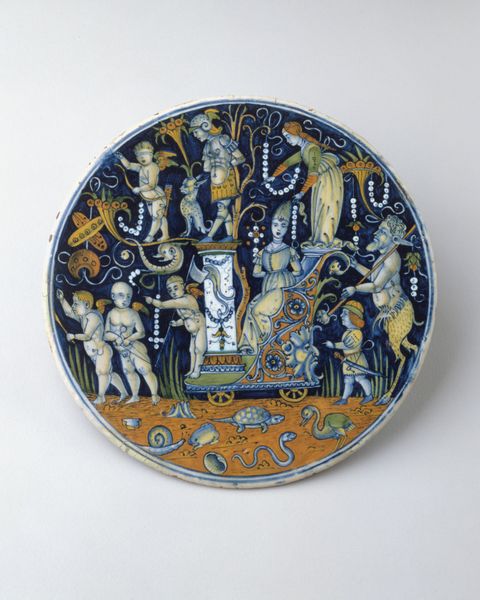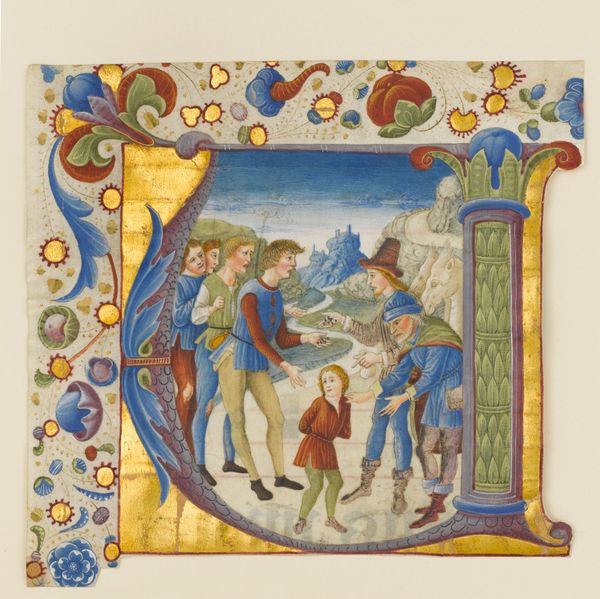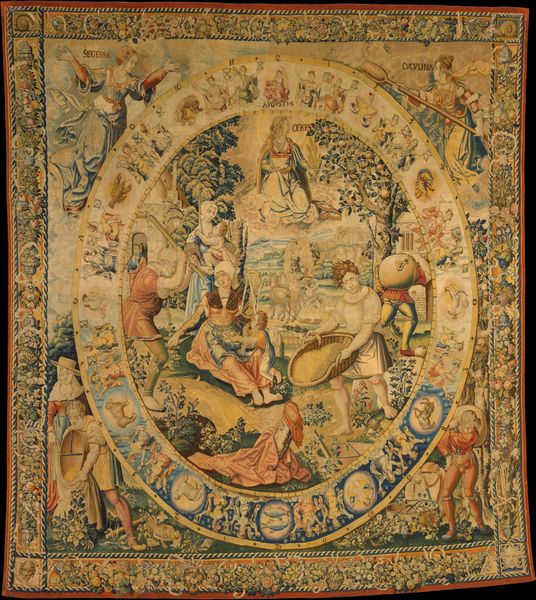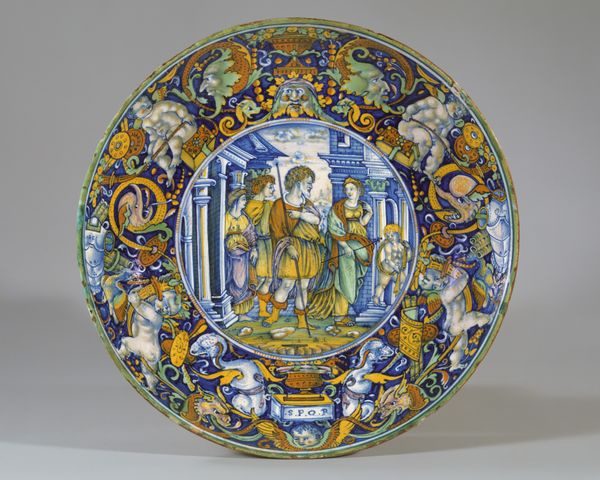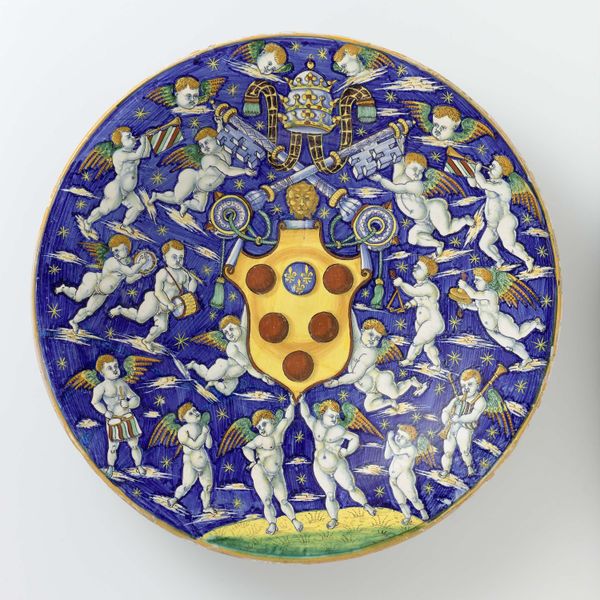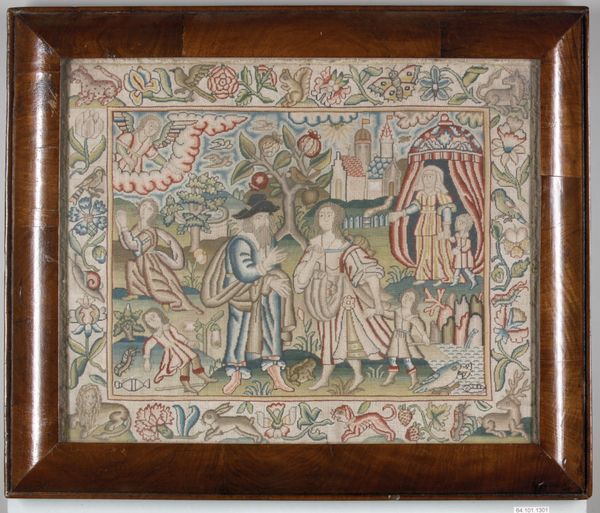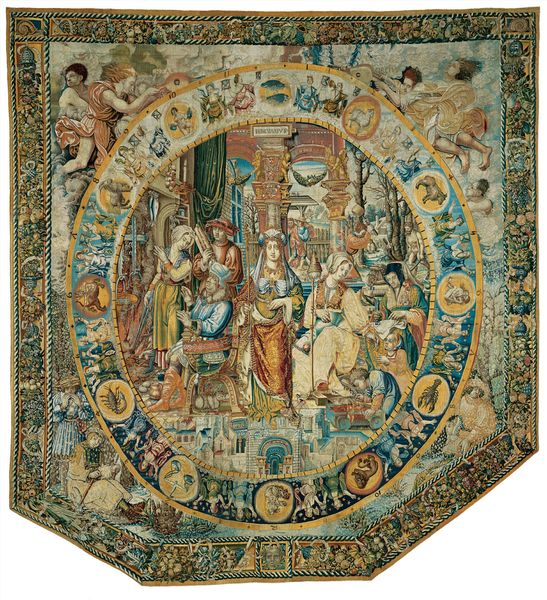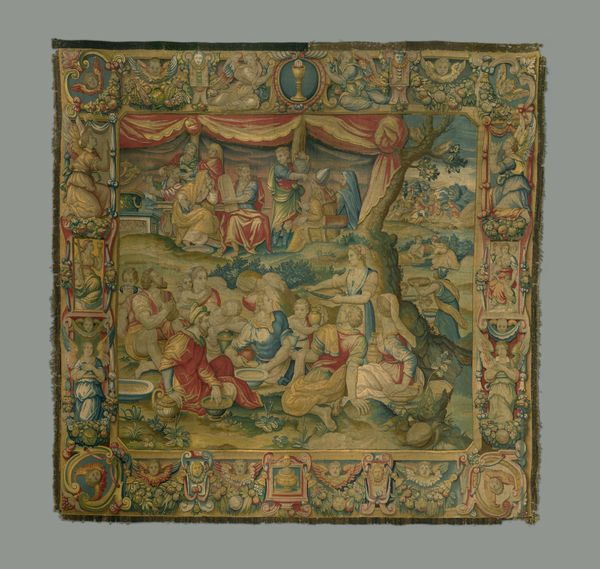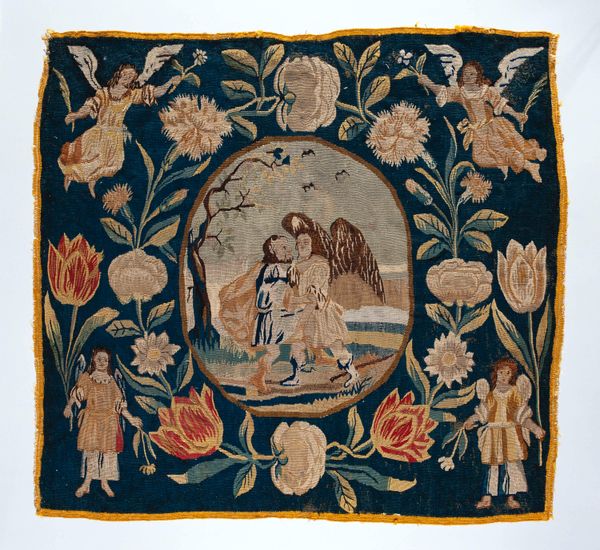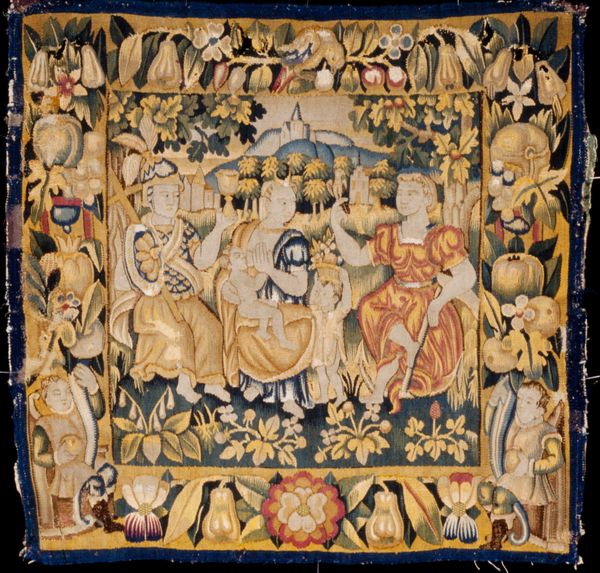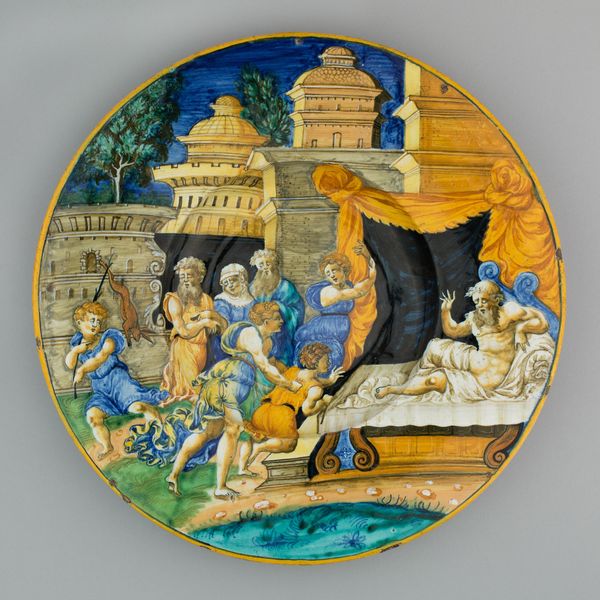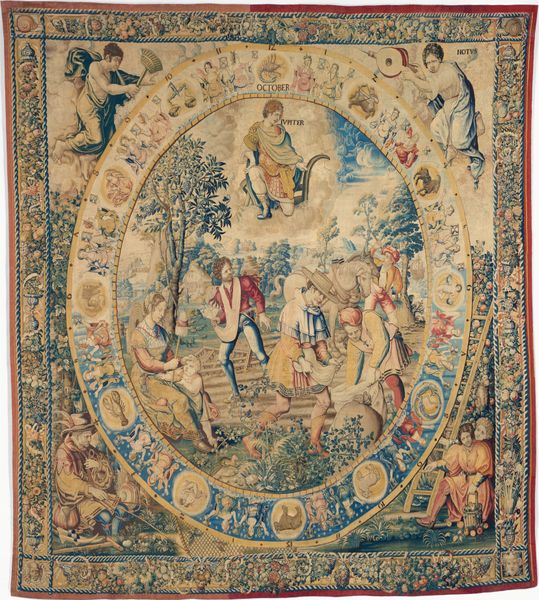
tempera, painting, fresco
#
decorative element
#
narrative-art
#
tempera
#
dutch-golden-age
#
painting
#
fresco
#
tile art
#
genre-painting
#
decorative-art
#
decorative art
Dimensions: height 39.5 cm, width 39.7 cm
Copyright: Rijks Museum: Open Domain
Editor: This is a tile panel depicting "The Return of the Prodigal Son" made in 1606 by Hans Bernaert Vierleger. It’s tempera on, well, tiles. It has this interesting blend of a biblical scene framed by quite decorative elements. What strikes me is the formal composition, the way the circular frame focuses the eye. What do you see in this piece from a Formalist perspective? Curator: The piece compels an analysis based upon its intrinsic formal relationships. Observe how Vierleger employs a circular framing device which serves to compress the central figures into an intimate foreground space, contrasted against the two mythic figures that symmetrically flank this circle. Do you perceive how this design choice enhances the emotive qualities through spatial restriction? Editor: I do. It’s almost as if those bearded figures are guardians of the narrative. Are those considered mythical figures just decorative? How would the tile-making process affect Vierleger’s formal choices? Curator: They operate in a dual capacity—as structural pillars, framing the composition, and decorative, due to the addition of fruits. This synthesis provides a sense of grounding. Given tile's immutable character as a medium, each stroke necessitates thoughtful precision, influencing decisions of line, form, and overall tonal arrangements within distinct units which when grouped serve to expand the field. Notice that although color seems spontaneous at first glance, on a closer inspection the artist balances the application of pigments across individual planes. Editor: So the limitations of tile-making in the 17th century informed not only its function but also its final form, its balance. That’s fascinating. Curator: Precisely. The tiles' rigidity paradoxically lends itself to both restrict and expand visual elements to make one united field, thus giving insight into Vierleger’s artistic acumen. Editor: I’ll never look at decorative art the same way again! Thank you.
Comments
No comments
Be the first to comment and join the conversation on the ultimate creative platform.
